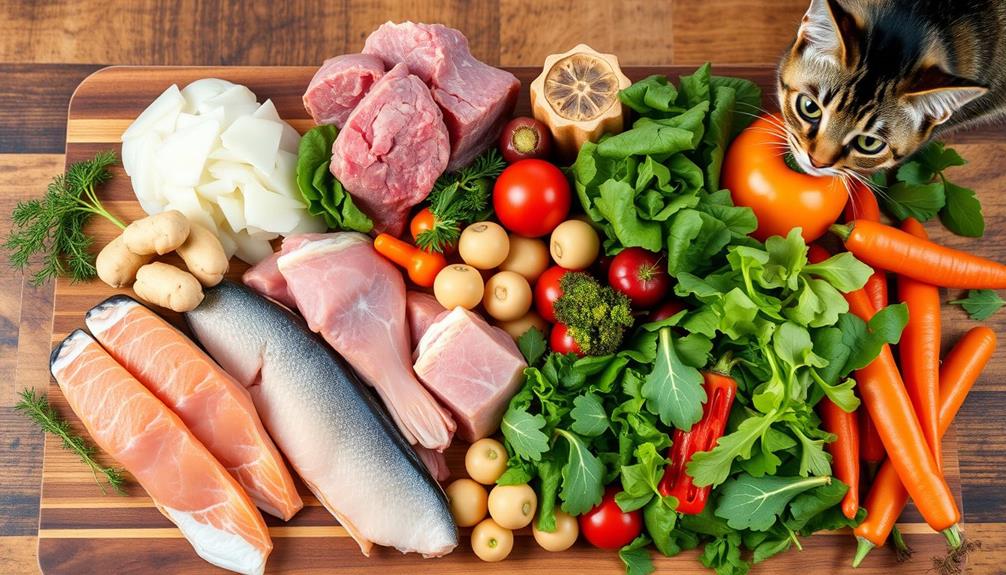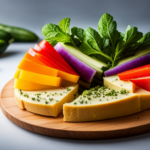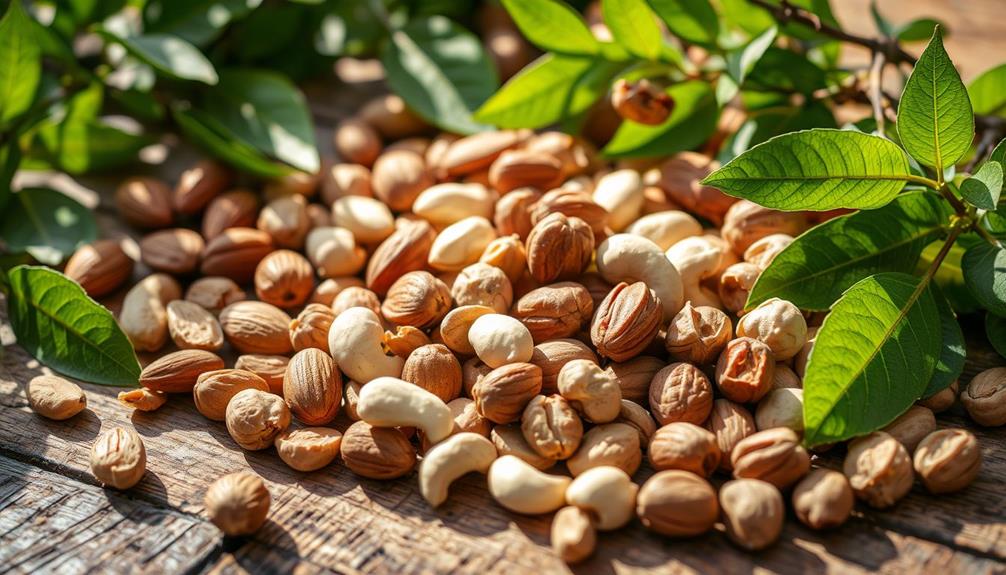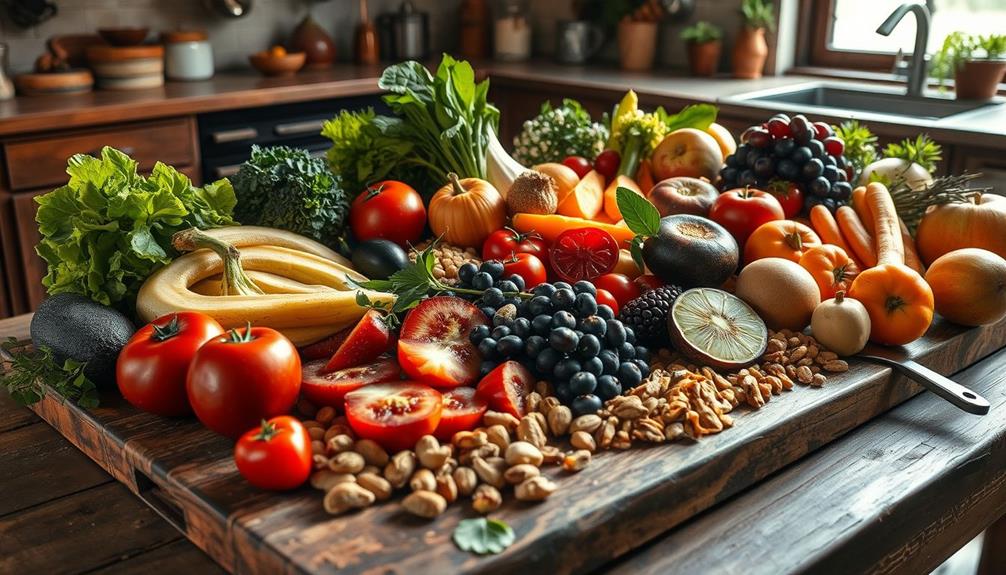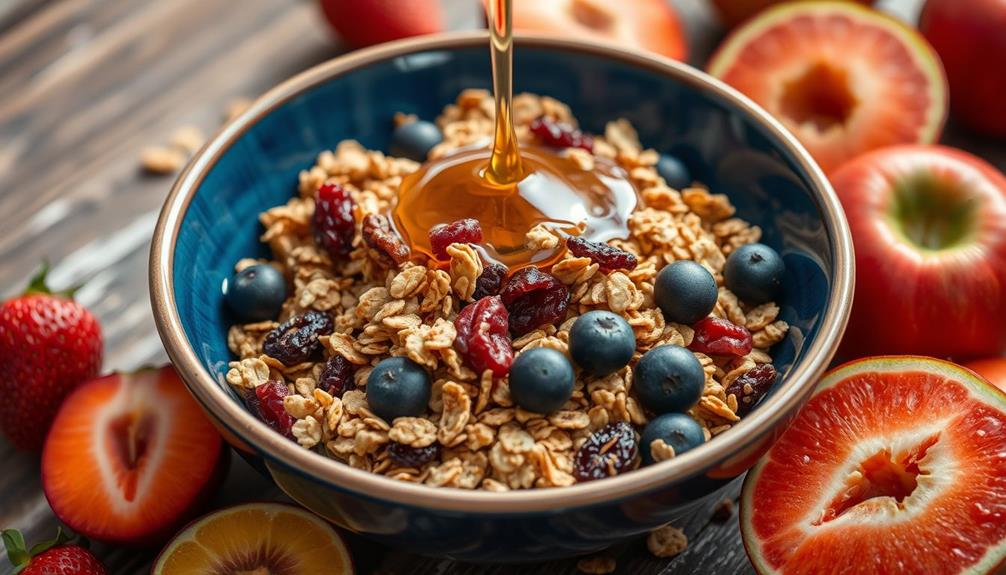Yes, cheese made from unpasteurized milk is considered raw food. This type of cheese retains natural bacteria and enzymes, which can enhance its flavors and nutritional benefits. Raw cheese has higher protein levels and vitamins compared to pasteurized varieties. Just remember that while raw cheese can be delicious and healthy, it may carry some health risks if not properly aged and sourced from reputable producers. In the U.S., cheese must age for at least 60 days to help reduce harmful bacteria. If you're curious about different types or culinary uses of raw cheese, there's more to discover!
Key Takeaways
- Raw cheese is made from unpasteurized milk, preserving beneficial bacteria and enzymes not found in pasteurized cheese.
- The aging process for raw cheese lasts a minimum of 60 days, which reduces the risk of harmful bacteria.
- Raw cheese retains higher nutritional content, including vitamins B and C, compared to pasteurized varieties.
- It supports gut health with probiotics that enhance digestion and immune function.
- Regulations on raw cheese ensure safety, but awareness of potential health risks is essential for consumers.
Understanding Raw Food Concepts
Raw food concepts often emphasize the importance of eating unprocessed and uncooked foods to maintain their natural nutrients and enzymes. This diet includes fresh fruits, vegetables, nuts, seeds, and certain dairy products like raw cheese. Advocates believe that cooking destroys essential nutrients and enzymes, which are crucial for optimal health and digestion.
Additionally, incorporating foods like herbal teas for relief may enhance your overall well-being while following a raw food lifestyle.
When you choose raw cheese made from unpasteurized milk, you're opting for a product that retains beneficial bacteria and enzymes, contributing to its unique flavors and potential health benefits. However, it's important to take into account food safety when consuming raw milk cheeses. The consumption of raw dairy products can expose you to higher risks of foodborne illnesses due to possible pathogens.
In the U.S., raw milk cheeses must be aged for at least 60 days before they can be legally sold, a regulation designed to mitigate health risks. This aging process helps guarantee that the cheese is safer to eat while still allowing you to enjoy the advantages of raw food concepts.
What Is Raw Cheese?
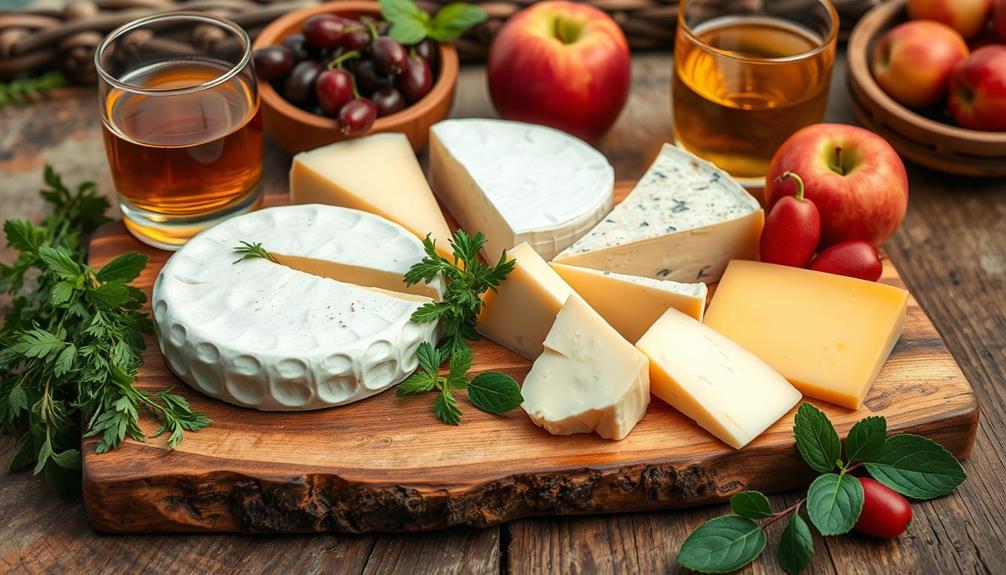
Cheese made from unpasteurized milk is often referred to as raw cheese, and it stands out for its ability to retain natural bacteria, enzymes, and unique flavors. Unlike pasteurized cheese, raw cheese undergoes an aging process that enhances its taste and complexity. In the U.S., raw milk cheese must be aged for at least 60 days to minimize potential health risks from pathogens.
Here's a quick overview comparing raw cheese to pasteurized cheese:
| Type | Characteristics | Examples |
|---|---|---|
| Raw Cheese | Retains natural bacteria and enzymes | Gruyère, Parmigiano-Reggiano, English Cheddar |
| Pasteurized | Kills bacteria through heat | American Cheddar, Mozzarella |
| Aging Process | Minimum of 60 days required | Yes (for raw), Not required (for pasteurized) |
Raw cheese can offer potential health benefits, such as improved gut health and easier digestion for those who are lactose intolerant. However, the safety of raw cheese largely depends on its production, handling, and adherence to strict regulations. Always verify you're sourcing from reputable producers.
Nutritional Benefits of Raw Cheese
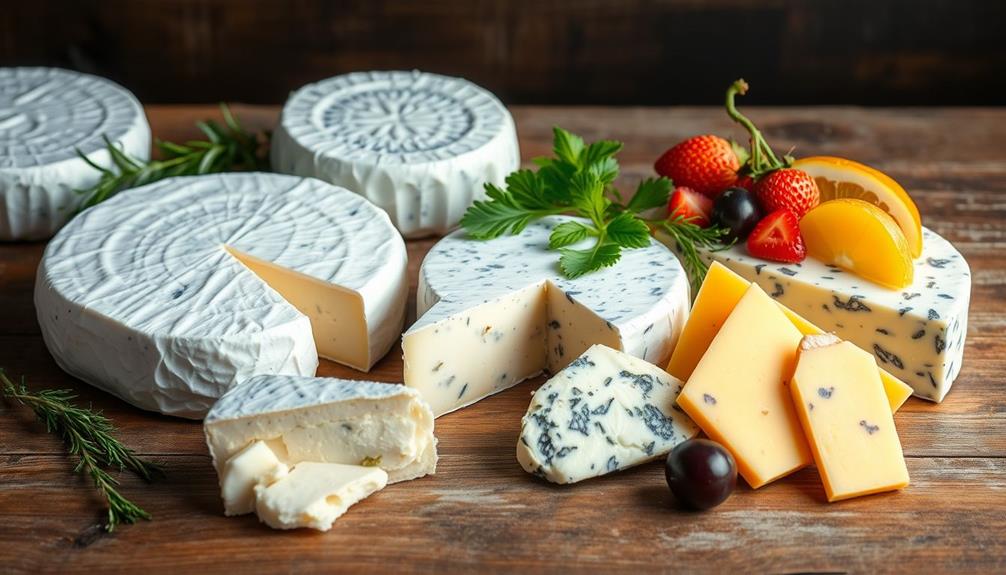
When you choose raw cheese, you're not just enjoying a tasty snack; you're also boosting your nutrition.
It's packed with beneficial gut bacteria and essential vitamins, making it a healthier option than pasteurized varieties. Additionally, raw cheese can contain higher levels of certain nutrients compared to processed cheeses, offering enhanced health benefits.
Plus, the unique aging process enhances the flavor, giving you an experience that's as delicious as it's nutritious.
Butter health considerations highlight the importance of enjoying dairy in moderation.
Higher Nutritional Content
While many people enjoy cheese for its flavor, the nutritional benefits of raw cheese make it a standout option. Raw milk cheese retains higher nutritional content compared to its pasteurized counterparts, contributing to overall health through its rich nutrient profile.
You'll find that it boasts elevated levels of vitamins B and C, which contribute greatly to your overall health. Additionally, raw cheese can offer advantages similar to those of Cranberry Juice Consumption, such as antioxidant properties that support well-being. This higher nutritional content isn't just about vitamins; raw cheese typically has a higher protein level too, aiding in muscle repair and promoting general well-being.
For cheese enthusiasts, the aging process of raw cheese also enhances its flavor complexity while concentrating its nutrients due to reduced water content. Furthermore, the preservation of natural enzymes in raw cheese plays an essential role in digestion, making it a suitable choice for those who are lactose intolerant.
While many might focus solely on taste, the nutritional advantages of choosing raw cheese are hard to ignore. By opting for raw milk cheese, you're not only indulging in a delicious treat but also reaping the benefits of its superior nutritional profile.
Beneficial Gut Bacteria
Packed with beneficial gut bacteria, raw cheese offers a unique advantage over pasteurized varieties. When you choose raw-milk cheese, you're not just indulging in a delicious treat; you're also supporting your gut health. The beneficial gut bacteria found in raw cheese are often destroyed during pasteurization, meaning you're missing out on essential probiotics that promote a healthy digestive system.
In addition, the role of probiotics in enhancing gut flora diversity is essential, as it's linked to improved immune function and overall health. If you're curious about cold medications overview, you'll find that gut health can play a role in how our bodies respond to various treatments.
These good bacteria enhance gut flora diversity, which is linked to improved immune function. If you struggle with lactose intolerance, the natural enzymes present in raw cheese can aid in digesting lactose, making it easier for you to enjoy dairy without discomfort.
Furthermore, raw cheese's nutritional profile is generally richer, boasting higher levels of vitamins B and C when compared to pasteurized options. Aged raw cheeses, which undergo fermentation, can develop even more complex flavors and a higher concentration of beneficial bacteria.
Enhanced Flavor Profiles
Raw cheese stands out for its enhanced flavor profiles, thanks to the unique aging process it undergoes. This process allows cheese makers to develop complex flavors that are rich and varied, influenced by the milk's natural microflora and the animal's diet.
As you explore raw cheese, you'll notice the following characteristics:
- Rich Concentration: Higher levels of vitamins B and C compared to pasteurized varieties boost its nutritional profile. Additionally, incorporating raw cheese into your diet may provide essential oil benefits that enhance overall health and wellness.
- Natural Enzymes: These enzymes help in lactose digestion, making raw cheese a viable option for those who are lactose intolerant.
- Beneficial Bacteria: The presence of gut-friendly bacteria not only supports digestive health but also enhances the overall flavor experience.
With reduced water content, raw cheese delivers a richer taste and nutrient concentration.
Each bite offers a unique experience, showcasing the artistry of cheese makers who understand how the aging process brings out these intricate flavors.
Safety Concerns and Regulations
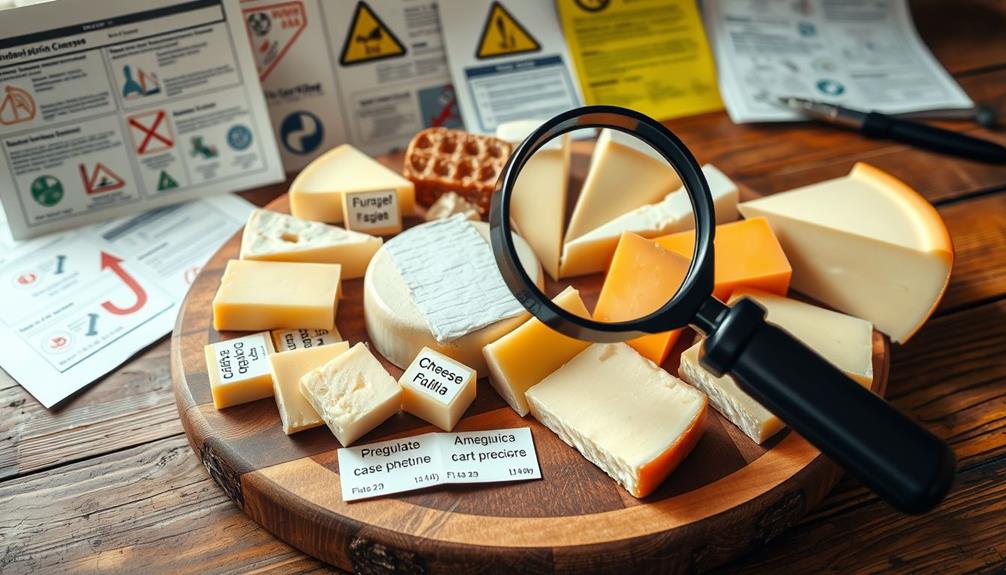
When it comes to raw milk cheese, you need to be aware of the health risks involved.
The FDA has established strict regulations, like requiring a minimum aging period of 60 days, to help reduce these risks.
This aging process is essential for minimizing harmful bacteria and ensuring safety, mirroring the importance of a solid budget plan in managing financial health.
Understanding these guidelines can be vital for your safety and enjoyment of raw cheese.
Health Risks Overview
The safety of raw milk cheese raises significant health concerns due to the potential presence of harmful pathogens like campylobacter, listeria, and E. coli.
These potential pathogens can lead to serious foodborne illnesses, impacting your health and well-being. While many people enjoy the unique flavors of raw cheeses, it's essential to recognize the risks involved, especially for individuals with compromised immune systems or underlying health conditions, which can increase vulnerability to infections related to BPD and emotional regulation.
Here are three key health risks associated with raw milk cheese:
- Increased Illness Rates: The CDC warns that raw milk products, including cheese, are linked to 300-1200 times higher rates of foodborne illnesses compared to pasteurized products.
- Contamination Rates: In a 2016 FDA study, less than 1% of 1,600 raw milk cheese samples showed contamination, with semisoft and soft-ripened varieties having higher rates than hard cheeses.
- Regulatory Gaps: Although the FDA mandates a 60-day aging process for raw milk cheeses, this doesn't eliminate all risks, especially given recent concerns like avian influenza.
Before indulging in raw milk cheeses, you should weigh these health risks against the pleasures of raw and pasteurized cheese production.
Regulatory Guidelines Explained
Understanding the regulations surrounding raw milk cheese is vital for consumers concerned about safety. In the U.S., the FDA mandates that raw milk cheeses must be aged for a minimum of 60 days. This aging process helps mitigate health risks associated with bad bacteria, such as campylobacter, listeria, and E. coli, which are commonly linked to raw milk.
Since 1949, regulations have prohibited the sale of fresh and bloomy rind raw milk cheeses, focusing instead on aged varieties believed to reduce harmful bacteria growth. Many consumers are drawn to artisanal cheeses, similar to how investors are attracted to Gold IRA options for their unique benefits.
The CDC highlights that raw milk is one of the riskiest foods due to its potential for foodborne illnesses. However, safety statistics from the FDA reveal that less than 1% of 1,600 tested raw milk cheese samples showed contamination, with soft-ripened and semisoft cheeses being the most affected.
To further guarantee safety, strict sanitation and manufacturing processes are vital in cheese production.
Ultimately, while you can enjoy raw milk cheese, being informed about these regulations can help you make safer choices and enjoy your cheese with peace of mind.
Popular Types of Raw Cheese
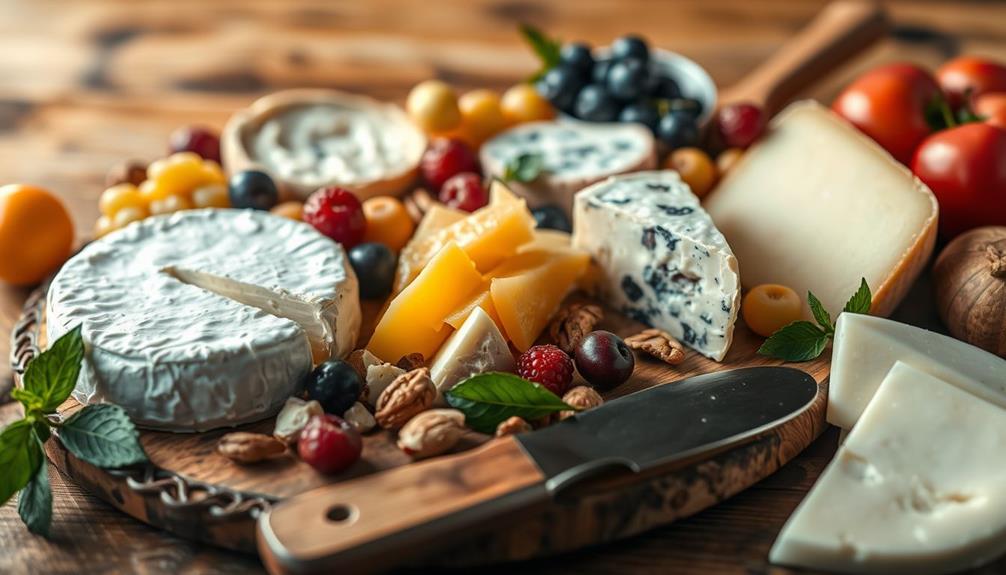
Raw cheese offers a delightful array of flavors and textures, enchanting cheese lovers around the world. The complexity of these cheeses can be compared to the nuanced benefits of various essential oils, such as essential oils for toothache relief, which can provide soothing properties.
If you're curious about popular types of raw cheeses, here are three that stand out:
- Gruyère – This Swiss cheese is known for its nutty flavor and smooth texture, perfect for melting.
- Roquefort – A classic blue cheese from France, it's rich and tangy, with a creamy texture that tantalizes the taste buds.
- Morbier – Recognized for its distinctive layer of ash, Morbier has a semi-soft texture with a mild, buttery flavor.
Unlike many cheeses made from pasteurized milk, these raw cheeses are crafted from unpasteurized milk, which allows for a more complex flavor profile.
To guarantee safety, raw milk cheeses must be aged for at least 60 days in the U.S., which helps minimize health risks associated with bacteria. This aging process allows the natural bacteria and enzymes to develop, giving raw cheeses their unique and intense flavors.
Flavor Profile Comparisons

When comparing the flavor profiles of raw and pasteurized cheeses, you'll discover a fascinating contrast shaped by their production methods. Raw milk cheeses like Gruyère and Parmigiano-Reggiano offer intense flavors that echo the diets and environments of the animals providing the milk. This complexity isn't typically found in pasteurized cheese, where the flavors develop more slowly.
Additionally, the importance of content quality and topical authority can be likened to the depth of flavor in these cheeses, as high-quality content enhances credibility and user experience.
The aging process of raw milk cheeses greatly enhances their flavor complexity. Trained tasters often note that these cheeses have a more pronounced intensity compared to pasteurized varieties. Subtle variations in free fatty acids contribute to the distinctive nutty, goaty, or spicy flavors of raw cheese, which get muted during pasteurization.
While some tasters can easily distinguish between raw and pasteurized cheeses, preferences vary widely. A considerable portion of participants in flavor tests tends to prefer pasteurized cheese for its milder taste.
Ultimately, whether you favor the boldness of raw milk cheeses or the smoother profile of pasteurized cheese depends on your personal palate, making the exploration of cheese flavors a delightful journey.
Culinary Uses of Raw Cheese
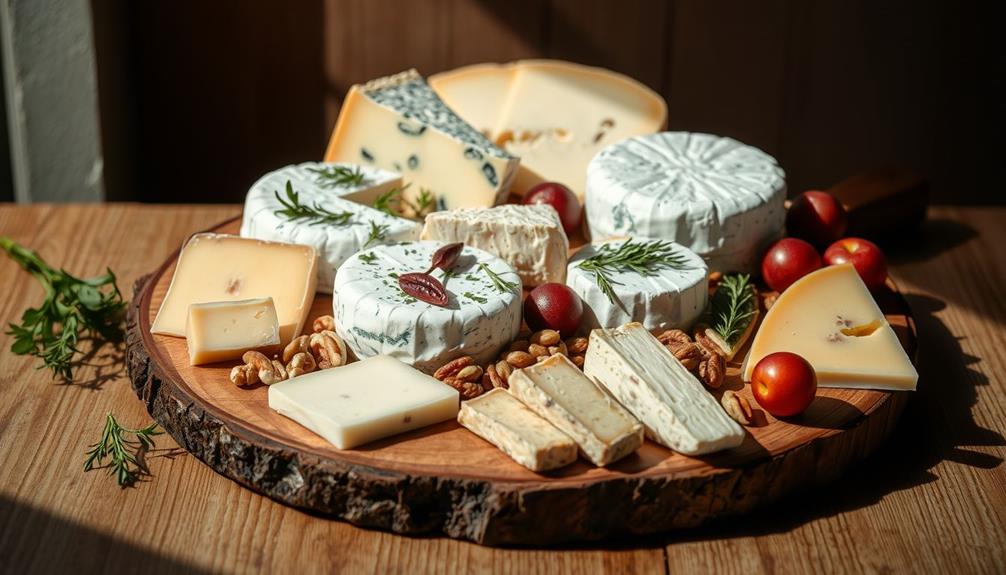
In the world of culinary arts, incorporating raw cheese can transform your dishes with bold and complex flavors.
For cheese lovers, the unique characteristics of raw cheese—crafted from raw milk—offer a delightful experience that pasteurized varieties can't match. The aging process enhances its culinary potential, allowing you to explore a range of textures and tastes.
Here are three ways to use raw cheese in your kitchen:
- Cheese Boards: Create a stunning cheese board featuring various aged raw cheeses. Pair them with fruits and nuts to highlight their rich flavors.
- Salads: Crumble aged raw cheese over salads for an added depth of flavor. Its texture and saltiness can elevate any dish.
- Pasta Dishes: Use raw cheese as a topping for pasta, letting it melt into a creamy sauce that brings your dish to life.
Consumer Education on Raw Cheese
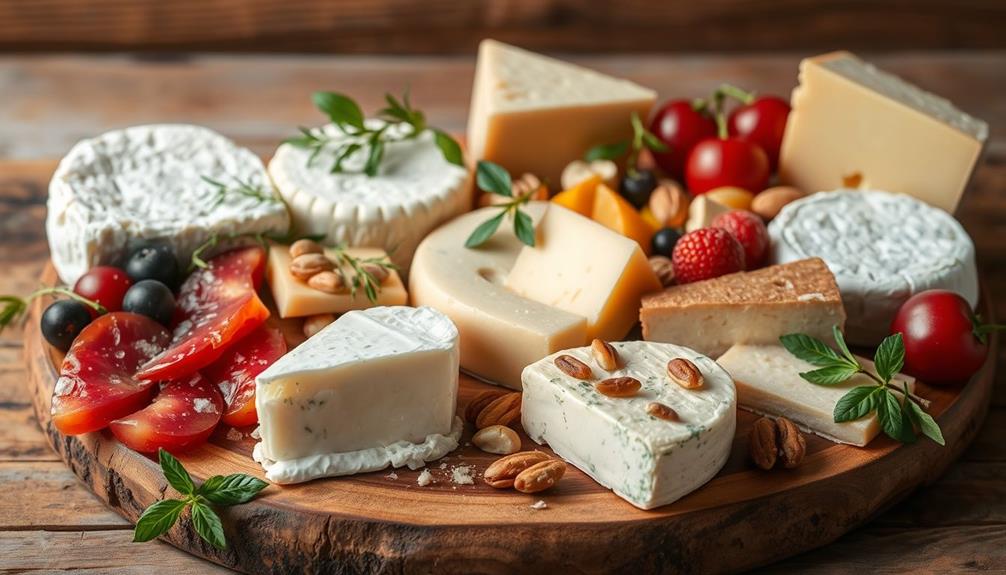
Understanding raw cheese is important for anyone looking to enjoy its unique flavors and potential health benefits. Made from unpasteurized milk, raw cheese preserves natural bacteria and enzymes that enhance its taste and nutritional value.
In the U.S., regulations require that raw milk cheeses be aged for at least 60 days, which helps reduce the risk of harmful pathogens. While studies show that less than 1% of tested raw milk cheese samples are contaminated, it's significant to remember that hard cheeses tend to have lower contamination rates than soft ones.
Consumer awareness is imperative, especially since raw milk products can pose higher foodborne illness risks. Vulnerable populations, such as pregnant individuals, should exercise particular caution.
To safely enjoy raw cheese, seek out reputable producers who take great care in implementing strict safety measures throughout the cheesemaking process. This diligence guarantees you can relish the complex flavors of raw cheese while minimizing health risks.
Frequently Asked Questions
Is Cheese Considered Raw Food?
Cheese can be considered raw food if it's made from unpasteurized milk. It retains natural flavors and beneficial bacteria, but guarantee it's aged properly and sourced from reputable producers to enjoy its unique qualities safely. This type of cheese can also provide a variety of enzymes, vitamins, and minerals that may not be present in pasteurized cheeses. It’s no wonder why animals eat raw food as it can provide them with essential nutrients and enzymes that contribute to a healthier diet. However, it’s important to be cautious and ensure that raw cheese is consumed in moderation to avoid potential health risks.
Was Cheese Invented or Discovered?
You'll find that cheese was likely discovered rather than invented, as evidence suggests ancient cultures stumbled upon cheese-making over 7,200 years ago, developing techniques independently to create diverse varieties that enrich our diets today.
Why Is Raw Cheese Illegal in the Us?
About 48 million people get sick from foodborne illnesses each year in the U.S. Raw cheese is illegal due to safety concerns over harmful pathogens, with strict regulations ensuring only aged products minimize health risks.
How Was Cheese Discovered by Accident?
You'll find cheese was discovered accidentally when early humans stored milk in animal stomachs, triggering natural fermentation. This curdling process transformed excess milk into a stable, longer-lasting product, paving the way for diverse cheeses today.
Conclusion
In the world of cheese, raw varieties beckon like a hidden garden, bursting with vibrant flavors and untamed textures. By embracing raw cheese, you're not just savoring a rich culinary experience; you're connecting to the earth and its traditions. So, take a bite, and let the creamy essence dance on your palate, revealing nature's artistry. As you explore this delightful domain, remember the importance of safety and knowledge, ensuring every morsel is both delicious and nourishing.


